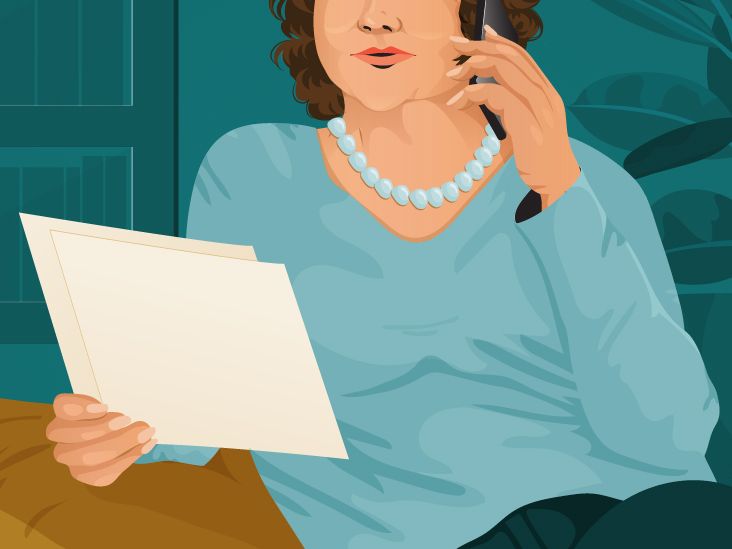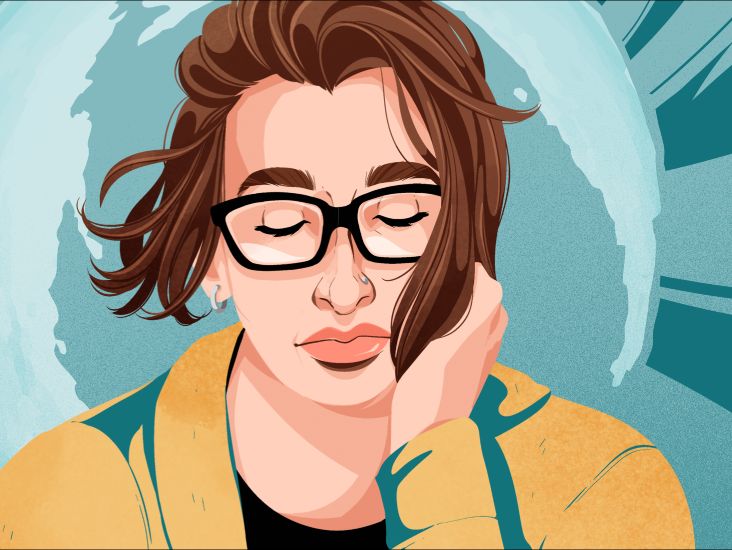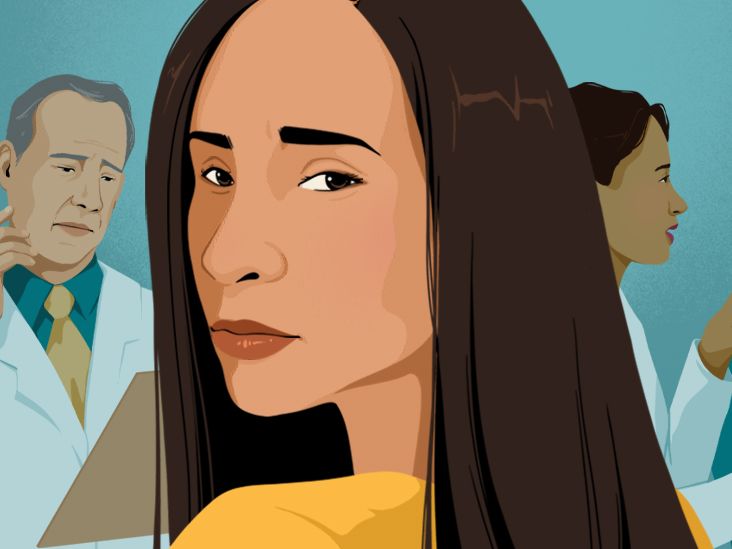The foreshadowing of my death appeared on my right index finger when I was 31 years old.
One freezing morning in January 2013, I was swimming in an indoor pool in Washington, D.C. I had begun training for my first half-ironman, which would take place in the fall. After that big race, David and I would start trying to have a baby. I had my life all planned out.
As I swam, I felt my entire body gliding through the silky, warm water — except my right index finger. I couldn’t fully extend it. Like it was stuck or something.
Other signs of ALS appeared in the months that followed — things so subtle that I only recognize them as symptoms now, in retrospect.
For instance, handwriting had become a burdensome chore. I sighed whenever I spotted a slip of paper taped to my mailbox, indicating a package I would need to sign for. I was also easily startled, jumping at the simplest things, like phone calls. And my leg shook uncontrollably sometimes as I raced down the escalator to catch a Metro train.
“I decided to set the craziest goal I could think of: to complete a marathon on my trike in all 50 states.”
The only thing that did catch my attention was my cycling and running times, which slowed down during training. Still, I rationalized. The increased exercise load explained why my hamstrings felt so tight. My answer — as always — was to work harder.
I made it through the race but was forced to walk most of the running portion because I felt like I was going to trip over my toes. I decided it must have been an injury from overtraining.
When I saw the physical therapist after the race, she said, “Your muscles just don’t seem strong enough for someone who did that long of a race.”
She sent me to a neurologist.
A parade of neurologists (five in total) ordered a barrage of diagnostic tests. The blood tests, MRIs, spinal tap, CT, nerve conduction study, and electromyography (EMG) all came back normal. The EMG was a painful test in which the doctor plunged needles into my flexed muscles. But at least it ruled out ALS.
Meanwhile, I was growing weaker. My toes forgot to flex upward when I walked. My voice slowed down. I fell in the middle of a D.C. street after a gust of wind knocked me down.
In a matter of 6 months, I went from finishing a half-ironman to walking with a cane.
“There aren’t any definitive tests for these types of conditions,” a movement disorder specialist told me. “At this point, it’s all a process of elimination and matching up symptoms. That’s what makes diagnosing a rare disease so challenging.”
He referred me to a colleague who specialized in primary lateral sclerosis (PLS).
“Statistically speaking, I had 2 to 5 years to live. No treatment. No cure. No chance of recovery.”
The PLS specialist gave me the clearest neurological explanation to date about what appeared to be happening to my body.
“For any muscle in your body to move, two main nerve connections must happen. First, when you think, ‘I want to take a step,’ your brain sends a message to your spinal cord through the upper motor neurons,” she explained. “The spinal cord then signals the appropriate muscles to flex via the lower motor neurons, long fibers that extend all the way to your glutes, thighs, knees, ankles, and toes.”
“The signaling process is so rapid,” she said, “that it seems instantaneous and unconscious — you’re just walking.”
I had not understood how truly magnificent the human body was until that moment.
People are diagnosed with ALS when both the upper and lower motor neurons are compromised. The EMG — those nasty needles they stuck into my muscles — tested my lower motor neurons. And I had passed.
PLS only affects the upper motor neurons, resulting in slow speech, slow handwriting, slow walking, tight muscles, being startled easily, and overall weakness — all of which mirrored my symptoms. Although it takes longer for the messages to get to the muscles, they can still respond.
PLS is not considered life-shortening, even though it is progressive, and many people end up in wheelchairs. It is the effect on the lower motor neurons that makes ALS deadly.
“Don’t get excited,” the specialist warned as she finished her explanation. “Most doctors won’t diagnose PLS for at least 2 years because sometimes the upper motor neuron symptoms emerge before the lower.”
After two more EMGs and 3 more months of confusion and anxiety, they confirmed the devastating news. I had ALS.
Statistically speaking, I had 2 to 5 years to live. No treatment. No cure. No chance of recovery.
I was diagnosed in August 2014. At the time, people around the globe were dumping buckets of ice on their heads and talking about ALS.
I learned about the brutality of the disease along with the rest of the world. The idea that I would lose the ability to walk, talk, eat, move, and eventually breathe was like a horror movie coming to life.
Reporters often ask how I felt at that moment — the moment I was diagnosed with ALS. But that moment doesn’t exist for me. I can’t separate it from the long, 20-month journey leading up to that conclusive diagnosis.
That “moment” is more like an animated flip-book — a series of events revealing an entire story: a stuck finger in the pool, tight hamstrings and balance issues during a race, falling in the street, appointments with five different neurologists, mind-numbing fear.
That moment doesn’t matter except to underscore one singular thought: I have no more time to waste in this life.
“How did you feel the day after your diagnosis?”
This is the far more interesting question reporters never ask. Not the moment you learn you’re going to die, but the first day you wake up with that knowledge and have to figure out how to go on living.
I thought: I want to do another triathlon.
Since I could no longer balance on an upright two-wheel bike, we bought an adorable little neon green recumbent trike. My best friend Julie and I signed up for a super sprint triathlon: a race consisting of a pool swim, a 9-mile bike ride, and a 2-mile run.
I swam slowly and awkwardly. But I enjoyed every inch of the 9 miles of pavement streaking under my trike’s tires. So much had been taken away from me in the past year — I reveled in the feeling of getting it back, even for one day.
The run — well, there was no run.
Two trekking poles replaced my cane, and I stumbled slowly along the 2-mile route while Julie steadied me with her arm. My legs refused to cooperate. All ten toes cramped in my shoes.
We finished last — by almost an hour. But when we turned the corner toward the finish arch, a hundred people had waited to cheer us in. Pandemonium broke out. Cheers, tears, screaming, clapping. I felt something reverberate through my whole body and soul. It was the very best of humanity. Compassion. Power. Life. All that goodness was directed straight at me.
That finish line changed how I thought about my disease and my future — no matter how much time I had left.
Everyone should have that feeling once in their lives, I thought. What if I challenged people to do a race to raise money for ALS research?
My original vision was to recruit twenty friends to pick a race that would represent a challenge to them. If they each raised $250, that would generate $5,000.
In the years that followed, four hundred people have tackled a race or personal challenge to appreciate what their bodies can do. They celebrated their strengths and abilities — everything that ALS ultimately takes away.
“That finish line changed how I thought about my disease and my future — no matter how much time I had left.”
To date, the Team Drea Foundation has donated over $1 million to ALS research, mostly to the ALS Therapy Development Institute and Duke University.
As for me, I continued to ride my little green trike and waited for ALS to catch up to me. I worked my way up to a half-marathon, then a marathon, then another. I loved the feeling of using my muscles, the freedom of motion.
In 2016, after relocating back to my hometown of Raleigh, North Carolina, I began swimming and doing water exercises with my mom. Then I started Pilates-based physical therapy. My particular “brand” of ALS seemed to respond positively to low impact, gradual strength-building.
In 2019, I reached the fifth anniversary of my ALS diagnosis — a milestone that only 20% of people living with ALS ever see.
I’m tired of waiting around for this disease to kill me, I thought.
I decided to set the craziest goal I could think of: to complete a marathon on my trike in all 50 states. And to film the journey as a documentary to raise funds for ALS research.
Our plan was to film for a year and get the film out as quickly as possible so people could run with me in some of the remaining states. Then, of course, the 2020 pandemic hit. We couldn’t end the film there (what a bummer of an ending!), but who knew how long races would be canceled or how long I would be strong enough to continue? I was already living on borrowed time. We decided to keep filming.
Did I really think I would make it to state No. 50? Not really. I was only at state No. 17 when the world locked down.
But that wasn’t the point. The point was to get out there and really live: to explore, to challenge myself, to be brave.
I hate to spoil the ending, but yes, I made it!
“Go On, Be Brave” follows my journey as I became the first person with ALS to do a marathon in all 50 states. The documentary is more beautiful and inspiring than I could have ever imagined — and I was there! Hope and my community propelled me across every single finish line.
Even with this accomplishment, I never want anyone to see my story and think: “ALS can’t be so bad if she is out there doing marathons.”
No. ALS is a cruel, crippling disease that can strike anyone at any time. My husband and I have watched our friends wither away and die, powerless to stop the progression of their disease. We hear the stories of loved ones lost too soon and families devastated emotionally and financially.
I have been given the gift of time that most people with ALS don’t get. And I have been given the perspective of how quickly it can all be taken away. So, I will be out on my trike, using my muscles and raising money to end ALS for as long as I possibly can.
Adapted from “Hope Fights Back: Fifty Marathons and a Life or Death Race Against ALS” by Andrea Lytle Peet with Meredith Atwood. Publishing September 2023 from Pegasus Books. Adapted with permission. The documentary, “Go On, Be Brave,” will appear in selected theaters in fall 2023, and hopefully be available for streaming in early 2024.




